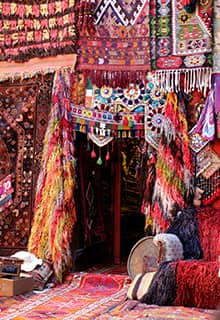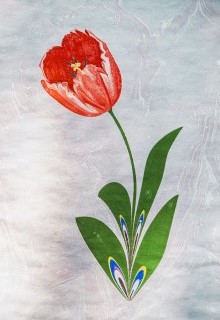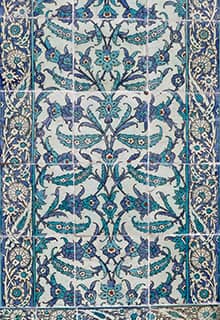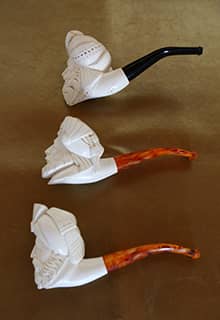

Top Picks! 5 Uniquely Turkish Handcrafts
in Türkiye
Carpets and Kilims: The Art of Knotted and Flat Weave Rugs
For thousands of years, Turkish rugs have been the gold standard in floor covering everywhere from nomadic huts to grand palaces. Turkish rugs are all made by hand. They can be made of silk, wool, or a wool-and-cotton blend. Dyes are all natural, using everything from rose madder to indigo to onion skin to attain subtle organic colours.
The Kilim (a flat weave rug) is a truly remarkable tradition maintained by women of Anatolia for hundreds of generations, dating back nine thousand years. Turkish mothers and daughters maintained this mysterious tradition for the last thousand years as Turkish tribes settled in Anatolia and intermingled with the local population. The oldest record of kilims comes from Çatal Höyük Neolithic pottery circa 7000 BCE, the oldest such settlement ever to have been discovered. It is located to the south east of Konya in the middle of the Anatolian region. The excavations to date (only 3% of the town) not only found carbonized fabric but also fragments of kilims painted on the walls of the houses. The majority of them represent geometric and stylized forms that are similar or identical to other historical to contemporary designs.
Ebru: The Art of Paper Marbling
Marbling is the art of creating colourful patterns by sprinkling and brushing colour pigments on a pan of oily water and then transforming this pattern to paper. The designs and effects include flowers, foliage, ornamentation, latticework, mosques and moons, and are used for decoration in the traditional art of bookbinding. The special tools of the trade are brushes of horsehair bound to straight rose twigs, a deep tray made of unknotted pinewood, natural earth pigments, cattle gall and tragacanth. The practitioner uses natural methods to extract colours from natural pigments, which are then mixed with a few drops of ox-gall, a kind of natural acid, before sprinkling and brushing the colours onto a preparation of condensed liquid, where they float and form swirling patterns. It is believed to that the technique was invented in the thirteenth century in historical Turkistan. This decorative art then spread to China, India and Persia and Anatolia. Seljuk and Ottoman calligraphers and artists used marbling to decorate books, imperial decrees, official correspondence and documents. New forms and techniques were perfected were added and Türkiye remained the centre of marbling for many centuries. Up until the 1920's, ebru artisans had workshops in the Beyazit district of İstanbul, creating for both the local and European market, where it is known as Turkish marble paper. Ebru artists, apprentices and practitioners consider their art to be an integral part of their traditional culture, identity and lifestyle. Their knowledge and skills, as well as the philosophy behind this art, are transmitted orally and through informal practical training within master-apprentice relationships. Achieving basic skills in Ebru takes at least two years.
Turkish Ceramics: The Art of Çini Tiles
The traditional craftsmanship of Çini-making is on the UNESCO List of Intangible Heritage (Inscribed in 2016). Çini are traditional, handmade glazed tiles and ceramics made in Türkiye featuring colourful motifs of plants, animals and geometric patterns often found on facades of buildings and in homes throughout the country.
Producing çini involves a series of processes. The clay is first shaped, lined, dried and fired in ovens specifically for çini Designs representing local customs and beliefs are then stencilled onto paper and transferred to the surface with coal dust. The outer contours of the patterns are hand drawn, the surface dyed with various colours and then the work is glazed and fired. Çini-making workshops involve craftspeople, supervisors and apprentices. Each craftsperson has a specific role – shaping, design and dye, polishing and undercoating or firing. Practitioners consider çini making as an outlet for self-expression, development and healing, as well as a means of maintaining an art form that is a symbolic aspect of Türkiye’s cultural identity, strengthening links from the past to the present providing continuity.
Calligraphy
Turkish calligraphy (hattatlık) is a unique artistic creation The Ottomans adopted it with religious fervour and inspiration, taking this art to its pinnacle over a 500-year period. Its most notable example might well be in the Sultan’s signature. A tughra (tuğra) is a calligraphic monogram, seal or signature of a Sultan that was affixed to all official documents and correspondence. It was also carved on his seal and stamped onto the coins minted during his reign. Very elaborate decorated versions were created for important documents that were also works of art in the tradition of Ottoman illumination, such as that of Suleiman the Magnificent (1494–1566).
Turkish calligraphy is also associated with abstract arabesque motifs on the walls and ceilings of mosques as well as on those found on the page. Contemporary artists in the Islamic world draw on the heritage of calligraphy to use calligraphic inscriptions or abstractions in their work.
Miniature Work
This is the name given to the art of producing very exquisitely detailed small paintings. Lead oxide, known as minium in Latin and which gave a particularly pleasant colour, was used for this purpose. That is where the word miniature derives from. In Türkiye, the art of miniature painting used to be called nakis or tasvir, with the former being more commonly employed. The artist was known as a nakkas or musavvir. Miniature work was generally applied to paper, ivory and similar materials.








